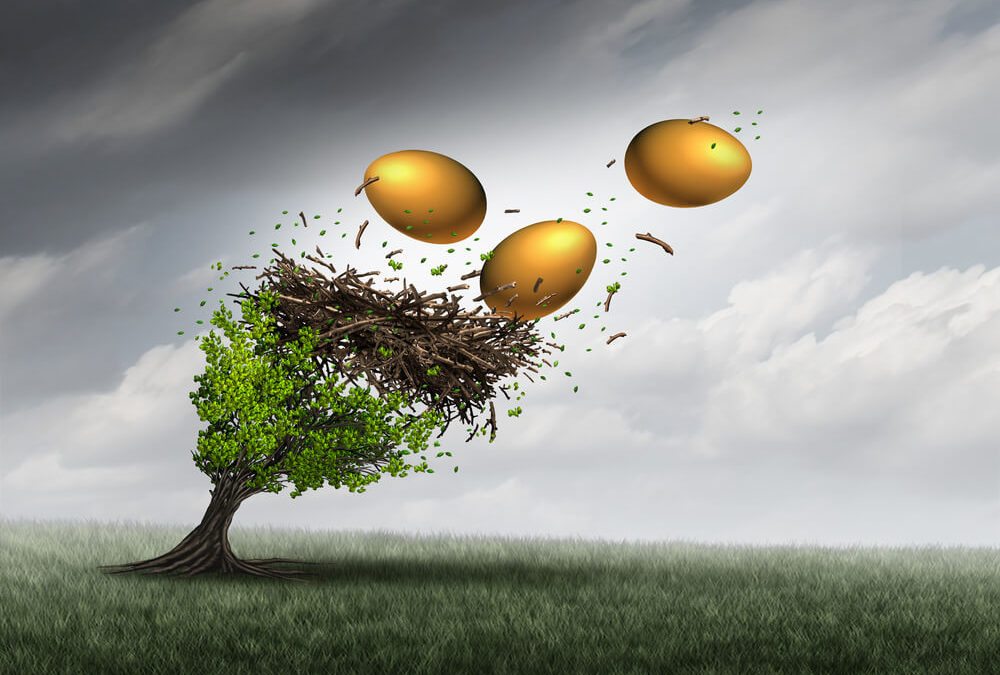Memory Lane
Over more than two decades we worked off and on in Downtown Los Angeles. We had a client for several years at 555 West 5th Street, in the tower at the base of Bunker Hill. We’d meet several times a week. Always in the morning.
Sometimes he would boast about his property in Coeur d’Alene, Idaho, and how he’d one day leave LA. Other times he’d deliver us a wire brushing for events beyond our control. One time he accused us of “smash and grab” tactics for merely requesting payment of a past due invoice for contracted work that had already been delivered.
After these inspiring encounters we’d hike by the collection of derelicts and dope smokers sprawled out on the wall in front of the Central Library. This was as we made our way back to our office at the Wedbush Center on Wilshire Boulevard near Figueroa Street.
On the corner in front of the 7-Eleven a clown appeared one day. He had oversized shoes, a rainbow wig, face paint — the whole costume. All day every day, rain or shine, he was there, jumping around, waving at cars and buses, and fist bumping people walking by. Then, after about nine months, he was gone. We never saw or heard of him again.
One spring day in 2016, amongst a mob of pedestrians, we gazed up at the skeleton frame of what would become the Wilshire Grand Center. For the first time in several years the buzz and hum of diligent building activity was eerily silent. Construction efforts had been shut down for the day.
Sadly, less than 24 hours earlier a distraught electrician had taken a swan dive off the 53rd floor. The man’s death prompted an immediate work stoppage and evacuation of the tower.
“It sounded like a bag of cement fell off the edge of the building,” remarked one observer.
Naturally, the sound of impact was far too grim for us to contemplate. We didn’t have much of an appetite that day.
But out of habit, we stopped at the food court — FIGat7th — and ate something called a moon bowl. There, in the shadow of the tower at 777 South Figueroa Street, we wondered how time must have simultaneously slowed down and sped up for the jumper as he descended toward the ground.
Brookfield Defaults Again
This trip down memory lane was wandered with intent and purpose. Because this week Bloomberg reported that Brookfield Corporation, one of the largest commercial real estate companies in the world, has defaulted on $161.4 million of office building mortgages.
These office buildings are mostly in Washington, D.C. However, this Brookfield default comes just two months after its much larger default of $784 million in mortgages for two office towers in Los Angeles. These include our old haunts at 555 West 5th Street and 777 South Figueroa Street.
The reasons behind the defaults are generally straightforward. The double whammy of higher vacancy rates post-Covid and higher interest rates have turned these buildings from profit generating ventures into huge gaping money pits. Here are the grim particulars from Bloomberg:
In the Washington metro area, office property values have plunged 36% through March from a year earlier, on par with declines nationwide, according to the Green Street index.
Among the dozen buildings in the Brookfield portfolio with the $161.4 million debt, occupancy rates averaged 52% in 2022, down from 79% in 2018 when the debt was underwritten, according to the report. Monthly payments on the mortgage’s floating-rate debt jumped to about $880,000 in April from just over $300,000 a year earlier as the Federal Reserve raised interest rates.
In short, as rental income declined due to higher vacancy rates and monthly mortgage payments jumped over 190%, throwing good money after bad became untenable for Brookfield. Default was the better option.
Fake Insurance
The fact is there’s simply too much unused office space. This is not a situation that will magically change.
Maybe a savvy developer will come in and complete an office-to-residential conversion. But that’s not Brookfield’s game. And whoever does it will only take the risk at a much lower price and with much better terms.
In the meantime, who loses?
According to Federal Reserve data, and as noted by Fortune, 67% of all commercial real estate loans are held by small banks and regional banks. Consequently, more debt defaults in the commercial real estate market could lead to more small and regional bank blowups.
If you have deposits under $250,000 in a bank that goes bust, you are protected by the Federal Deposit Insurance Corporation (FDIC). But how safe is your money, really?
At the end of 2022, the FDIC reported its Deposit Insurance Fund had a balance of $128 billion. This comes to a reserve ratio of 1.27% of the total insured deposits.
By our estimation, insurance reserves of 1.27% of potential obligations are not real insurance. Rather, these reserves are fake insurance that pays for an extremely fragile trust which says, “if you don’t pull your deposits, I won’t pull mine.”
In a real panic, FDIC reserves would be vaporized in less than a day.
Presumably, some of these bad mortgages have been packaged up in tranches as collateralized loan obligations (CLOs) and sold to pension funds and other investors. Could this be the initial alarm bell of a financial crisis akin to the mortgage-backed securities (MBS) crisis of 2007-09?
If the report from the $306 billion California State Teachers’ Retirement System (CalSTRS) is any indication, then the answer is a definitive yes. Specifically, this week it was revealed that CalSTRS is preparing to write down the value of its $52 billion commercial real estate portfolio.
From what we can tell, these bad investments were not made via CLOs. Nonetheless, you can already smell the rot buried in commercial real estate CLOs. We’ll have to do some more digging to unearth the decay.
What Brookfield’s Default Has to Do with You
Today, however, there’s a more important question to answer. What does Brookfield’s default on these commercial properties have to do with you?
You may not yet realize it. But these defaults have everything to do with several unfavorable factors that are currently working against you. These include elevated consumer price inflation and relatively higher financing costs. And here’s how they’re making your life less agreeable…
The two most common purchases by the average person that require financing are for automobiles and houses. Relatively higher interest rates make the debt payments on these purchases incredibly burdensome.
Consider automobiles, for instance. According to the Washington Post:
The average interest rate for a new vehicle was 7% in the first quarter, compared with 4.4% a year earlier. That’s the highest level since 2008, according to new data from Edmunds, a car shopping website. For used vehicles, the average jumped from 7.8% to 11.1%.
This is why the monthly payment for roughly 17% — or about 1 in 6 — of new vehicle loans in Q1 2023 was over $1,000 bucks.
At that price it really doesn’t matter what your income level is. One thousand dollars a month for a car payment is a significant pile of money. So, too, is $730 per month, which was the average monthly payment for a new vehicle in the first quarter.
In all seriousness, do not sign up for one of these monster car payments. This will ruin your life for decades to come. Sooner or later, something must give in the way of lower car prices. Don’t lock yourself in to this misery.
Not only does a monster car payment cut into people’s monthly budgets. It also limits their ability to save and invest for the future. And if people aren’t saving and investing for the future, they’re not building wealth. To the contrary, like Brookfield, they’re burning wealth.
To this end, we have a hunch that over the next couple of years vast numbers of people are going to experience the rush that comes when time simultaneously slows down and speeds up.
Not because they’ve committed a base jump off a skyscraper — though some will. Rather, it’ll occur at the precise moment they come to the disturbing realization that they’re broker than broke.
[Editor’s note: Like this article? If so, please Subscribe to the Economic Prism.]




